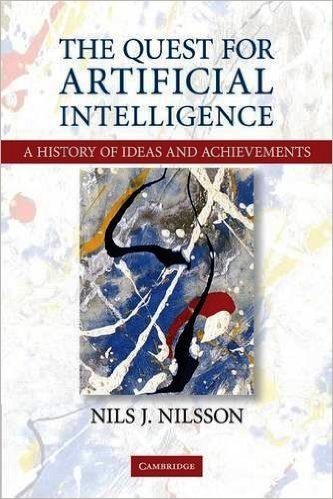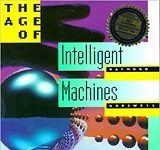| Book Name: | The Quest for Artificial Intelligence |
| Category: | Artificial Intelligence |
| Language: | English |
| Format: | |
| Free Download: | Available |
The Quest for Artificial Intelligence by Nils J. Nilsson
Artificial intelligence (AI) is a field of computer science that attempts to integrate advanced intelligence into computer systems. This book traces the history of the subject, from the early dreams of pioneers in the 18th century (and before) to the most successful works of today’s artificial intelligence engineers. AI is becoming more and more part of everyone’s life. The technology is already embedded in facial recognition cameras, speech recognition software, internet search engines, and healthcare robots, among other applications. The book contains many diagrams and easy-to-understand descriptions of AI programs that will help the casual reader understand how these and other AI systems work. Its detailed (but unobtrusive) footnotes contain important source citations that will be very useful to academics and AI researchers. This book promises to be the ultimate history of a field that has captured the imaginations of scientists, philosophers, and writers for centuries.

Book Description:
There is a great deal of good material here. I wonder if the general problem of producing a history of AI would not have been better decomposed into a set of mini-histories each concerned with a particular topic and occupying a single chapter. For example, NLP, machine vision, robotics, knowledge representation, vagaries of public/private financing, major commercial deployments, etc. each could have been addressed in a single chapter. In this book, individual topics pop up again and again in interleaved fashion as the author’s single timeline unfolds. This may be a bit disconcerting for readers not already well versed in the field. Other advantages of a modular approach to the history of AI rather than a simple sequential approach are ease of updating the text for future editions and the ability of subject matter experts to quickly find and provide constructive feedback in their areas of expertise.
A minor irritation was the use of URLs in body text rather than confining them to end notes. Most authors would like their books to be timeless; the use of highly fragile URLs in body text seems to contradict this goal.
I suspect that this is the best history of AI we have so far. I recommend this book to anyone interested in the field.
Table of contents :
Part I. Beginnings: 1. Dreams and dreamers
2. Clues
Part II. Early Explorations: 1950s and 1960s: 3. Gatherings
4. Pattern recognition
5. Early heuristic programs
6. Semantic representations
7. Natural language processing
8. 1960s infrastructure
Part III. Efflorescence: Mid-1960s to Mid-1970s: 9. Computer vision
10. ‘Hand-Eye’ research
11. Knowledge representation and reasoning
12. Mobile robots
13. Progress in natural language processing
14. Game playing
15. The dendral project
16. Conferences, books, and funding
Part IV. Applications and Specializations: 1970s to Early 1980s: 17. Speech recognition and understanding systems
18. Consulting systems
19. Understanding queries and signals
20. Progress in computer vision
21. Boomtimes
Part V. ‘New Generation’ Projects: 22. The Japanese create a stir
23. Darpa’s strategic computing program
Part VI. Entr’acte: 24. Speed bumps
25. Controversies and alternative paradigms
Part VII. The Growing Armamentarium: From the 1980s Onward: 26. Reasoning and representation
27. Other approaches to reasoning and representation
28. Bayesian networks
29. Machine learning
30. Natural languages and natural scenes
31. Intelligent system architectures
Part VIII. Modern AI: Today and Tomorrow: 32. Extraordinary achievements
33. Ubiquitous artificial intelligence
34. Smart tools
35. The quest continues.
The quest for artificial intelligence a history of ideas and achievements
Author(s): Nilsson, Nils J.
Publisher: Cambridge Univ. Press, Year: 2013
ISBN: 9780511819346
the quest for artificial intelligence – nilsson pdf









![[PDF] Draw Buildings and Cities in 15 Minutes Draw Buildings and Cities in 15 Minutes pdf](https://www.freepdfbook.com/wp-content/uploads/2021/06/Draw-Buildings-and-Cities-in-15-Minutes-218x150.jpg)








![[PDF] Digital Image Processing An Algorithmic Introduction Using Java Digital Image Processing An Algorithmic Introduction Using Java](https://www.freepdfbook.com/wp-content/uploads/2022/06/Digital-Image-Processing-An-Algorithmic-Introduction-Using-Java.jpg)




![[PDF] 43 Years JEE ADVANCED + JEE MAIN Chapterwise & Topicwise Solved Papers 43 Years JEE ADVANCED (1978-2020) + JEE MAIN Chapterwise & Topicwise Solved Papers Physics PDF](https://www.freepdfbook.com/wp-content/uploads/2022/03/43-Years-JEE-ADVANCED-1978-2020.jpg)

![[PDF] Problems in Physical Chemistry for JEE (Main & Advanced) Problems in Physical Chemistry for JEE (Main & Advanced) Free PDF Book Download](https://www.freepdfbook.com/wp-content/uploads/2022/03/Problems-in-Physical-Chemistry-for-JEE-Main-Advanced.jpg)
![[PDF] Engineering Physics (McGraw Hill)](https://www.freepdfbook.com/wp-content/uploads/2021/05/bafc8c2685bb6823a9c56134f7fba5df.jpeg)

![[PDF] Engineering Chemistry By Shashi Chawla](https://www.freepdfbook.com/wp-content/uploads/2022/05/Theory-And-Practicals-of-Engineering-Chemistry-By-Shashi-Chawla-free-pdf-book.jpeg)
![[PDF] Chemistry: An Introduction to Organic, Inorganic & Physical Chemistry Chemistry: An Introduction to Organic, Inorganic & Physical Chemistry](https://www.freepdfbook.com/wp-content/uploads/2022/04/Chemistry-An-Introduction-to-Organic-Inorganic-Physical-Chemistry.jpg)
![[PDF] Essentials of Physical Chemistry Essentials of Physical Chemistry Free PDF Book by Bahl](https://www.freepdfbook.com/wp-content/uploads/2022/04/Essentials-of-Physical-Chemistry-bahl.jpg)
![[PDF] Biological control of plant-parasitic nematodes: soil ecosystem management in sustainable agriculture Biological control of plant-parasitic nematodes: soil ecosystem management in sustainable agriculture](https://www.freepdfbook.com/wp-content/uploads/2022/05/Biological-control-of-plant-parasitic-nematodes-soil-ecosystem-management-in-sustainable-agriculture.jpg)
![[PDF] Human Anatomy: Color Atlas and Textbook Human Anatomy: Color Atlas and Textbook Free PDF Book](https://www.freepdfbook.com/wp-content/uploads/2022/05/Human-Anatomy-Color-Atlas-and-Textbook.jpg)
![[PDF] Concepts of Biology Book [Free Download]](https://www.freepdfbook.com/wp-content/uploads/2022/05/Concepts-of-Biology.jpg)
![[PDF] Essentials of Biology [Free Download] Essentials of Biology Free PDF BOok Download](https://www.freepdfbook.com/wp-content/uploads/2022/05/Essentials-of-Biology-Free-PDF-Book-Downlaod.jpg)
![[PDF] Human Biology Book [Free Download]](https://www.freepdfbook.com/wp-content/uploads/2022/05/PDF-Human-Biology-Book-Free-Download.jpg)


![[PDF] AI Crash Course AI Crash Course: A Fun and Hands-on Introduction to Machine Learning PDF](https://www.freepdfbook.com/wp-content/uploads/2022/08/AI-Crash-Course-A-Fun-and-Hands-on-Introduction-to-Machine-Learning-PDF-160x150.jpg)